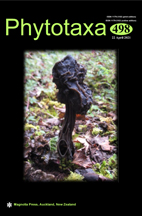Abstract
Allium yingshanense, a new late-flowering diploid species (2n = 16), is described from the Dabie Mountains (east-central China). It grows on moist rock slopes along river banks in forests or rocky cliffs with an aggregated distribution. Morphologically, it is distinctly different from all known species of the Chinese Allium by its outer and inner filaments with 1-toothed on each side, which is fairly rare in the entire genus Allium, suggesting it is an independent species. The ITS phylogenetic analysis further reveals that the new species is most closely related to A. longistylum and A. flavovirens, which is also highly congruent with their overall morphological and chromosomal similarities, supporting placing the new species into A. subg. Cepa according to the current infrageneric classification of Allium. It is easily distinguished from A. longistylum and A. flavovirens particularly by filaments, inner and outer tepal characters at the specific level. Additionally, A. longistylum is proven to be endemic to China and morphologically quite different from the Korean ‘A. longistylum’ in bulb, leaf and floral characteristics, and not a member of A. sect. Sacculiferum or sect. Condensatum formerly suggested. The inclusion of the new species A. yingshanense along with A. longistylum into the newly proposed A. sect. Flavovirens typified by A. flavovirens, although possible from our data, as well as the formal description of the section seem premature especially given that there is substantial incongruence between taxonomy and molecular phylogeny of A. subg. Cepa.

